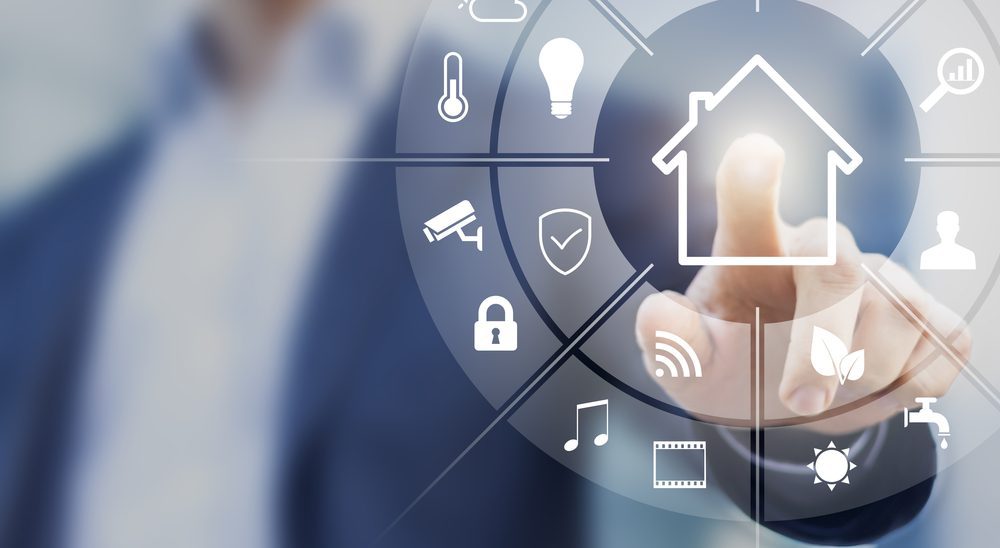Building energy monitoring remains pivotal in 2022 and beyond

Matthew Margetts, Director of Sales and Marketing at Smarter Technologies, looks at why building energy monitoring remains pivotal in 2022 and beyond.
In the face of climate change and dwindling natural resources, energy conservation and carbon reduction is a major goal of the 21st century. Another driving factor is the rise of ESG (Environmental, Social, and Governance) issues. Driven by demands from consumers, investors and stakeholders, and regulatory change, ESG is reshaping the way that today’s businesses operate.
According to a 2020 report by the World Health Organization (WHO), it is essential that we decarbonize and transform our cities and buildings. Although this can be a complex process, digitalization is a significant enabler of the carbon-reduction revolution.
The transformative potential of digitalization became even more significant during the Covid-19 pandemic, which shows us how modern technology can provide a substitute for in-person tasks and interactions—and often a more efficient one at that. Similarly, embracing smart technology can help businesses, buildings, homes and cities reduce and optimize energy consumption.
The transformative potential of digitalization became even more significant during the Covid-19 pandemic, which shows us how modern technology can provide a substitute for in-person tasks and interactions—and often a more efficient one at that. Similarly, embracing smart technology can help businesses, buildings, homes and cities reduce and optimize energy consumption.
What does energy efficiency look like?
Sustainable energy efficiency aims to minimize the amount of energy used without hindering economic growth or compromising our quality of life. This can include:
- Avoiding energy losses
- Recycling and reusing various types of waste
- Reducing energy demand
- Using renewable sources
An energy monitoring and control system is a crucial ingredient in any energy efficiency strategy.
Deploying a smart building energy management system allows a building and its equipment to become more efficient and environmentally friendly. Notably, the implementation of energy management solutions provides building and facility managers with comprehensive data that allows them to understand their current energy consumption and how it can be reduced and optimized in the future.
The role of an energy management system is to:
- Gather information from various energy sources and users
- Monitor energy, demand and power quality
- Analyze multivariable and single-variable data to identify problems and trends
- Provide alerts if energy consumption goes beyond set parameters or if any failures in mechanical or electrical systems are detected
- Integrate with the control systems to enable automation
- Identify energy wastage
- Benchmark the building’s energy consumption
- Facilitate effective energy visualization and analytics
- Provide data dashboards and trends for energy consumption
- Enable effective decision making
Five key benefits of a smart energy monitoring system:
- Reduce energy consumption for both environmental and economic benefits
- Reduce running costs through smart automation and control
- Minimize maintenance and repair costs by picking up potential problems quickly
- Improve the conditions and comfort levels for users of the building
- Demonstrate ESG values
By monitoring energy supply 24/7, an energy monitoring system allows managers to reduce unnecessary wastage. For example, if excess solar energy is being produced but isn’t being used, there may be scope for the facility to reduce its reliance on the grid.
Energy management software collects all data into an online (often cloud-based) portal, presenting facility managers with the opportunity to manage their energy remotely through any connected device. This allows them to maintain control over high-voltage equipment and complex building operations from anywhere in the world. Instant alerts can notify managers of any irregular power supply issues or other energy discrepancies, allowing them to respond quickly when needed. In addition, automation removes many manual management tasks.
In the ESG space, climate change continues to be a leading consideration. In 2022 and beyond, the global transition towards net zero is likely to continue at pace. An energy management system has an important role in helping managers work towards net zero in both a micro and macro capacity.
IoT technology has become a business change accelerator. Today’s facility and building managers can now employ smart technology to achieve net zero objectives. Armed with actionable data, they will be able to address energy consumption and efficiency both now and in the future.
READ MORE:
- How is Technology Stopping Climate Change
- Creating a more sustainable future with tech
- Are NFTs heading down an unsustainable path?
- Smart Cities: the future of flooding control
About Smarter Technologies
Smarter Technologies tracks, monitors and recovers assets across the globe in real time, providing asset tracking systems to the open market and fulfilling the world’s most complex asset tracking requirements. Its services cover a vast array of business sectors, products and equipment from container or pallet tracking to military-grade devices; and can be used across a broad spectrum of industries.
As a leading IoT company, Smarter Technologies also provide smart building solutions for modern businesses, offering wire-free, battery-powered and low-cost IoT smart sensor technology. Its solutions will put an end to scheduled maintenance and help businesses utilize their building’s efficiency, benefitting from real-time alerts and facilities management tools that will bring them into the 21st century.
Click here to discover more of our podcasts
For more news from Top Business Tech, don’t forget to subscribe to our daily bulletin!
